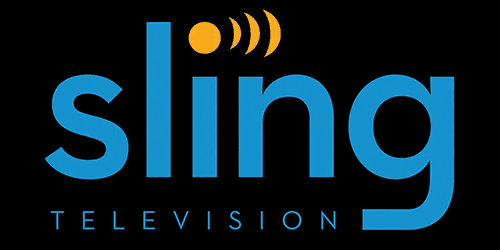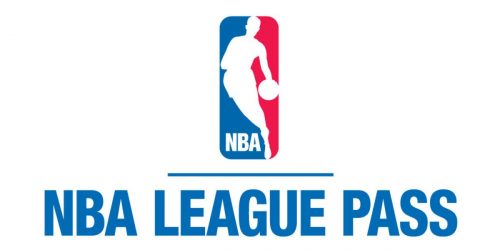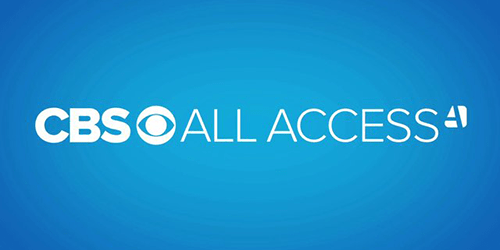Cord-cutting has existed for as long as there have been legacy pay TV services (like cable and satellite) to cut. But it has become a big trend only relatively recently. Why? The answer is streaming video. Never before has it been so easy to cut the cord without cutting out all of the entertainment that you crave. By using the right streaming services, it's possible for you to watch all of your favorite TV shows, movies, sports, and even live network television channels — all over the internet.
Of course, with the explosion of streaming services, a new issue has arisen: there are almost too many options! With so many different streaming services — and so many different types of streaming services — it's easy to feel overwhelmed. What's the best way to watch TV without cable? Which streaming service should you buy? Should you subscribe to more than one? And what is the difference between Sling TV and Netflix, anyway?
Relax — we're here to help. In our CordCutting.com Streaming Service Buying Guide, we lay out everything you need to know, from the most basic background on what streaming services are and how they work to specific tips on how to determine which streaming services are right for your ultimate cord-cutting setup. We'll also link out to our individual streaming service pages, which examine individual services in more depth. Let's get started!
What is a streaming service?
First things first: what is a streaming service, anyway? Well, it's a service that streams something, of course: music, games, or — as we're focused on here — video. But defining streaming services this way means we'd better answer another question: what is streaming?
What is streaming?
Computers can play videos, of course. Even relatively early PCs were capable of reading digital files and showing us films and TV show episodes. The older way of doing this is to have the computer in question read a file that it has saved in its own storage space.
But what if the video file wasn't on the computer? We could put the video file on the internet. Then, our computer could connect to the internet and read the video for our viewing pleasure.
One option we'd have would be to download the entire video, and then watch it the regular way — by reading the big file that is now on our computer. But that's not a very efficient way to manage your computer's storage space, because movies are big files.
Instead, let's download just a little bit of it at a time. Our computer can get a bit of the file, read it, and show us a bit of the movie. It can throw out the stuff it doesn't need anymore and keep downloading the new stuff it need in order to show us what happens next in the film. This, essentially, is how streaming works!
There are a few more details, of course. Our computer will “buffer” the video — that is, download a bit more than it needs right now, which is good because our internet speeds can vary, and we don't want to catch up to what our computer is downloading and have our video freeze on us. You should also know that higher resolution videos require more data, so your computer needs a faster internet connection to get the good stuff to you in time — more on that later.
You can stream lots of things. You can stream music, for instance, on music streaming services like Spotify. You can even stream games, with your computer uploading your inputs on a gaming controller while downloading the images it displays on your screen. We're focused here on video streaming services, of course.
On last thing. We should remind you that it's not just computers that can do this — or, put a different way, a lot of devices that we don't call “computers” actually are. You can stream video on mobile devices, smart TVs, and made-for-TV streaming devices like “streaming boxes” and “streaming sticks” (more on those in a bit).
What do I need in order to stream video?
Now we know how streaming works. And we already knew that streaming services are replacing old-school pay TV services by offering streaming movies, TV shows, and even live TV. So we just have a couple of details left to work out. First: what do you need to have in order to make a streaming service work?
An internet connection
As we laid out above, streaming is something that happens only on the internet. So, of course, you need an internet connection to stream video! (Some streaming services will let you “watch offline” when you don't have a connection, but this just means you're downloading stuff ahead of time and then your device is reading a local file — so, if you want to get technical, it's not streaming at all! Besides, you'll still need an internet connection to download the stuff in the first place, so let's stay focused.)
What kind of internet connection? Well, that depends on what you want to watch and how you want to watch it. You'll need speedier internet and more generous data limits if you're going to stream live TV or 4K than if you're going to be watching on-demand content in 1080p or 720p.
Your internet is virtually certain to be ready to stream things like Netflix (which is an on-demand service, as we'll talk about later) in standard definition or even 1080p. There's a good chance that your internet is capable of handling beefier streaming tasks, too, but you'll want to take a look at your internet speeds before you assume that. Internet speeds are measured in Mbps, which means “megabits per second” and means, essentially, how much stuff can be downloaded or uploaded in a second (internet packages are generally advertised by their download speeds, and upload speeds are generally slower, because uploading — while important — is not as vital as downloading, which does the heavy lifting for stuff like streaming video).
It's important to note that your internet connection speed and data limits aren't the only factor here, though. You connect to the internet through a cable that heads from your modem out of your home or apartment and on to the big, wonderful internet. But you don't plug directly into your modem every time that you want to use the internet, of course! You have a router (sometimes a separate device, sometimes built into the same device as your modem), which does exactly what it sounds like: it routes traffic from your home network to your modem and the internet. You can connect to your router with a wire (Ethernet cable), or you can use your router's Wi-Fi. Wi-Fi has limits all its own, which means that you could have super-fast internet and still be streaming pretty slowly on your Wi-Fi. If you get speedy internet that meets the standards we suggest and are still having issues, we recommend checking out your router and, perhaps, replacing it with one of the ones we recommend.
Something to stream on (and something to watch on)
Okay, so you have an internet connection. Now what? Well, you'll need a device to connect to the internet, of course.
That can be a computer, as you probably already knew. You can head to a streaming service's website in your browser (or use a downloaded app that connects to the internet) and enjoy movies, TV shows, and live TV on your computer.
You can also stream video on your mobile devices: tablets and smartphones work great, as long as they are connected to the internet or to a mobile carrier network.
And then there's your TV. Can you stream on your TV? Well, that depends: does your TV connect to the internet and have access to the right apps? If so, you have a smart TV, and you're all set. If not, don't worry. Any TV can become a smart TV if you add an external streaming device to it.
Streaming devices like this, including tidy little “streaming sticks,” larger “streaming boxes,” and all manner of “dongles,” can plug into an input on your TV and display streaming video on it. Actually, many video game systems can do this too (in addition to playing games, of course). If you're serious about streaming, it makes sense to get a great streaming device or smart TV with a reliable, easy-to-use interface and access to tons of apps. That will usually mean getting a major streaming platform (like Roku, Fire TV, Android TV, or Apple TV) on a streaming device or smart TV.
So there you have it: a device to stream on, and a screen (sometimes built in, sometimes not) to watch on. You're all set!
What kinds of things can I stream?
Streaming can work with just about anything. We mentioned earlier that you can even stream things besides video! But our focus is on video, of course, so let's talk about exactly what sorts of videos you can stream over the internet.
Good news: you can stream just about any type of video that you could imagine. TV shows? Yep. Movies? Yep. Live TV, including sports? Yep.
And you can watch these things in different ways, too. Netflix, the O.G. TV and movie streaming service and still the most popular and famous, is what we call a “subscription video on demand” service. We'll talk about the subscription part in our next section (when we tackle cost), but first let's talk about “on demand.” That means that, if you subscribe to Netflix, you can watch anything in Netflix's catalog whenever you want. You can start and stop it whenever you want, and you can rewind it and fast-forward it, too. Lots of the streaming services that you'll be able to use to watch your favorite TV shows and movies are on-demand services.
But you can stream live TV, too. Some services stream live events that you can tune into when they start; when the event ends, the stream ends. Other services emulate the cable TV model: they offer you familiar network channels like AMC, ESPN, and MTV, and you can watch those channels live and even channel-surf. It feels like cable or satellite, but it's all streaming video!
In short, you can stream just about any kind of content you crave — provided you have the right streaming service for the job. And if you keep reading, we'll help you track down the ones that fit the bill.
What does streaming cost? Can I stream TV for free?
Cutting the cord saves so many people money because streaming services are, generally speaking, much more affordable than cable or satellite subscription services. Some streaming services are even free!
A lot of the streaming services that you've probably heard of operate on a subscription basis. You sign up to pay a monthly rate (some offer an annual rate, if you like the idea of a lower price and more commitment), and you get unlimited access to your streaming service of choice. If you want to cancel, you can: generally, you'll see your cancellation take effect at the end of the current billing period. So you'll get all of the days that you already paid for, and then your service will end and you won't be billed anymore.
Generally, streaming video on demand (SVOD) services like Netflix cost somewhere around $10 to $15 a month. A few are cheaper, including most of the ones that we call “niche” streaming services (these are the ones that specialize in a genre or type of content — like Shudder, which shows only horror content).
Live TV streaming services usually start around $40 to $45 per month for a robust package of channels. Some services offer slimmer bundles for less, though they're usually missing some popular channels. From there, live TV streaming services can grow in size and price significantly, so you can pay for more if you crave more live TV!
League streaming services (like Major League Baseball's MLB.TV), which offer live games and on-demand replays from the pro sports leagues that run them (with some blackouts — read the fine print!) can vary significantly in price, from around $130 per month to north of $200. You'll want to check out your options for monthly and annual subscriptions, single-team subscriptions, and more.
What about those free services? Well, they're usually on-demand services, too: a type that we call “ad-supported video on demand,” because they make their money through — you guessed it — ads that play during the programming.
We've mostly focused on the subscription stuff here, but it's important to note that you can also buy or rent streaming movies and TV shows. Amazon, Google Play, and iTunes, among other streaming marketplaces, will let you pay for temporary or permanent rights to stream titles, which is a great way to watch stuff that happens not to be available to stream (such as many new film releases).
A word of caution: as we explained above, streaming is just a way of sending files over the internet bit by bit. Anyone can do it — including crooks. So if you find a streaming service that seems too good to be true, be wary. There are shady services out there that are operating on the wrong side of the law. And while so far the FBI hasn't made a habit of crashing through streamers' doors over illegal services, these services are illegal, and you don't want to share your computer's information (or payment information, if the shady service in question isn't free) with crooks. Plus, you're downloading stuff from criminals if you stream on illegal services: remember, just because your computer doesn't hold onto the data that it streams from streaming service servers doesn't mean that it's not actually downloading all of that stuff. When you use a legitimate streaming service, you can trust that the stuff your computer is downloading is all the stuff you want to watch, and not bad stuff like malware or spyware.
We'll break down exact prices in the next section, but this should give you a head start on shaping your budget as you consider what types of streaming services you want to invest in and how many of each to subscribe to. And you'll notice that, as we moved through this section, we also laid out a few categories (in bold) that will help us understand what sort of streaming services are out there. That will help us in the next section!
Streaming services you need to know about
We've told you what streaming services are and how we can break them down into categories. So it's high time that we ran through our long list of options. Hopefully it isn't as intimidating now — and don't forget that we still have to break down the ways in which you can weigh your options and settle on a lean, mean cord-cutting setup that is tailored to your interests, priorities, and budgets!
We'll be recapping the basics, including the prices, but don't be afraid to click on the linked sub-headers below and visit our in-depth service pages. From there, you can check out detailed descriptions, details on pricing and contracts, and — through another link or two — our reviews, rankings, and other essential information on the top streaming services.
Subscription video on demand services
With these services, you'll get unlimited access to a catalog of streaming videos in exchange for a regular subscription fee.
Amazon Prime Video
Price: $119 per year or $12.99 per month (includes all Amazon Prime perks)
Amazon seems to be involved in every kind of business under the sun these days, and streaming is no exception. Amazon Prime Video is a Netflix-like video subscription that is included as a part of Amazon's Amazon Prime subscription program (which also includes other perks, like a limited music streaming service and free two-day shipping on select items in Amazon's web store). This service includes licensed content (the catalog overlaps a bit with Hulu's and that of some other streaming services) and original Amazon productions, some of which have been major popular and critical hits. (By the way, this streaming video subscription is separate from buying and renting streaming movies through Amazon. You can buy and rent stuff using the same app and your same Amazon account, but you do not have to be an Amazon Prime subscriber to do that.) For more on all of this, check out our Amazon Prime Video review.
Disney Plus
Price: $6.99 per month or $69.99 per year
Disney's on-demand streaming service is chock full of Disney-owned content, including not just the famous animated classics but also modern Disney subsidiaries and properties like Pixar, Star Wars, and Marvel Studios. Disney also makes Disney+ available in a bundle with two other Disney+ services — ESPN+ and Hulu (on-demand and with ads) — for $12.99 per month. We gave Disney Plus a positive review.
Max
Price: $14.99 per month
Before streaming video was a mainstream thing, HBO was offering people movies and premium original content. So it's natural to see HBO competing with Netflix and other services that offer licensed and original content on a subscription basis. These days, HBO has its own streaming service: Max. Max replaced HBO's prior streaming effort, HBO Max, and we like it a lot — to see why, check out our Max review.
Hulu
Price: $6.99 per month or $11.99 per month for the ad-free version (Hulu also has a live TV streaming service; for that price, read on)
Hulu was one of Netflix's earliest competitors. It has great content — as of this writing, it's the only place where you'll find Seinfeld — plus lots of great original stuff. You'll see Hulu again later on in this list, so let's explain why right now: Hulu has a Netflix-like streaming video on demand service and a live TV streaming service to offer. If you get just the on-demand stuff, you'll pay the price listed above. If you get “Hulu + Live TV” (listed further down this page), you'll pay more and will get the live TV bundle and all of the on-demand stuff that this version has. Also worth noting: Hulu (on-demand and with ads), Disney+, and ESPN+ are available as a bundle for $12.99 per month. We've reviewed Hulu's on-demand portion as well as its live TV option.
Netflix
Price: $8.99 per month (Basic), $12.99 per month (Standard), or $15.99 per month (Premium)
Here it is: the one that started it all. Netflix kicked off the streaming craze in 2007 and its head start has helped it gain a robust library of quality content. Netflix has also been busily creating its own original content. It's cost-effective for Netflix to own its own stuff, but streamers benefit, too: many of Netflix's originals, including the series Stranger Things and the movie Roma, have met with critical acclaim. As we said in our Netflix review, this classic option is still hard to beat.
Live TV streaming services
Also called “skinny bundles,” these services offer a cable-like live TV experience, complete with familiar network television channels, for a fraction of the price. If you're trying to figure out how to watch Fox News without cable or how to stream ESPN without cable, these are the services that you're looking for.
DIRECTV

Price: $65 per month (Plus), $80 per month (Max), $93 per month (Entertainment), $110 per month (Choice), $124 per month (Xtra), or $135 per month (Ultimate). A Spanish-language bundle, Optimo Más, costs $86 per month.
AT&T's live TV streaming service offers a variety of different tiers of bundles, which range from the relatively skinny from the downright cable-like. Formerly known as AT&T TV (and, before that, AT&T TV NOW and DIRECTV NOW), this service has a new look but remains a solid option. For more on why we like DIRECTV , check out our DIRECTV review.
fuboTV
Price: $54.99 per month (fubo), $59.99 per month (Family) or $79.99 per month (Ultra). A Spanish-language bundle (Fútbol Quarterly) costs $19.99 per month.
fuboTV offers top channels like AMC and HGTV, plus a particularly robust selection of sports channels that offer coverage of foreign soccer leagues (the latter is because fuboTV was actually founded as a soccer streaming service — but it has been a regular old live TV streaming service for years now, so don't worry about that). As we explained in our fuboTV review, fuboTV is for everyone, but it still holds a special appeal for sports fans.
Hulu + Live TV
Price: $54.99 per month, plus optional add-ons
Hulu has long been a popular choice for on-demand streamers. And, for a while now, it has also been home to fans of live TV. Hulu's simple one-bundle setup makes it easy to just grab a skinny bundle and go. All of the usual suspects are present in Hulu's lineup, and you'll get Hulu's on-demand service included in this price. We reviewed Hulu + Live TV separately from Hulu's on-demand option.
Philo
Price: $25 per month
Boy, that price is low! That's because Philo is a special type of skinny bundle. The folks behind Philo set out with the goal of creating the most affordable bundle possible, and they did so by pinpointing the priciest channels in larger bundles and cutting them mercilessly. The result? There are no sports channels, news channels, or local channels on Philo. But that makes it a great option for those who can live without those things and want to save a ton of money. The value here is a big part of why this service fared well in our Philo review.
Sling TV
Price: $30 per month (Sling Orange or Sling Blue) or $45 per month (Sling Orange and Sling Blue), plus optional add-ons
The first “skinny bundle” live TV streaming service to go nationwide back in 2015, Sling TV is also a fairly unique service. It offers some of the skinniest bundles on the market, for one: its $30 “Sling Orange” and “Sling Blue” bundles are cheaper than all but the sports-lacking Philo and its peers. Of course, neither Sling Blue nor Sling Orange is as complete as the two are together (and together, they cost the same as most similar entry-level bundles). But the choose-your-own bundle ethic goes beyond the building-block Orange and Blue bundles. You can add “Extras” — small add-on bundles with appropriately small prices — to your Sling TV package in order to build out a customized skinny bundle of channels that you actually want to watch. You can also add more hours of cloud DVR storage to the service (the DVR itself, along with basic storage, is included from the get-go). Most live TV streaming services have add-on options, but, as we explained in our Sling TV review, this service takes things to a whole other level.
YouTube TV
Price: $49.99 per month, plus optional add-ons
Google's YouTube has been a giant of streaming for years, but it always focused on user-generated videos and some professionally made content — not on live network TV channels. YouTube TV, which shares YouTube's branding but is its own subscription service with its own apps, expands Google's reach and competes with the other giants of live TV streaming. Picking a plan is simple, because there's just one skinny bundle here. It's a pretty good one: The YouTube TV channel list is impressive. For more on YouTube TV, check out our YouTube TV review.
Ad-supported video on demand
These services let you watch anything in their libraries whenever you want for free, and support themselves by selling ad space interspersed in the streams.
PopcornFlix
Price: Free!
You won't see as many big titles on PopcornFlix as you would on Netflix or Hulu, but you can't beat the price! Grabbing the PopcornFlix app is a great way to supplement your other streaming options or avoid having to pay to rent or buy something.
Sony Crackle
Price: Free!
Sony Crackle is one of the older and more established free streaming services, and it tends to have a few goodies in its library. You may even see titles on Crackle that are available on Hulu or Amazon Prime as well.
Tubi TV
Price: Free!
Tubi TV has the largest library of the free services. Sure, lots of the titles here aren't exactly critically acclaimed hits, but there are some treasures in this catalog — and there's always something to watch. Keep an eye out for titles that Tubi TV's library shares with the (paid) libraries on Hulu and Amazon Prime Video.
“Niche” streaming services
These streaming services technically fit into larger categories (usually SVOD), but their niche appeal makes them a bit different from larger services aimed at broad audiences.
Crunchyroll
Price: Free, or $7.99 per month, $22.99 per three months, or $79.99 per year for a Premium membership
Crunchyroll is focused on content produced in Japan and elsewhere in Asia, and it has a particular focus on anime. More than just a video streaming service, Crunchyroll also offers subscribers access to online manga (Japan's unique graphic novel/comic book art form) and other content.
Shudder
Price: $5.99 per month or $56.99 per year
Like Netflix, Shudder is a subscription video on demand service. Unlike Netflix, it doesn't have any comedies or any dramas. In fact, it doesn't have anything but horror: horror movies, horror shows, and even a horror-related documentary or two. The content includes licensed horror films and original content from Shudder.
Hallmark Movies Now
Price: $5.99 per month or $59.99 per year
If you love to watch the Hallmark Channel but don't want to pay for cable, you could consider subscribing to Hallmark's own on-demand streaming service. Hallmark Movies Now offers tons of Hallmark originals. As we wrote in our Hallmark Movies Now review, this is a service aimed squarely at die-hard Hallmark Channel fans. Did we mention that there's a Hallmark Movies Now free trial?
League streaming services
These streaming services offer live regular-season games from their associated leagues, but be sure to check the blackout policies for local and nationally televised games.
MLB.TV
Price: $91.99 per year (single team pass), $118.99 per year (all teams), or $24.99 per month (all teams). Prices periodically lower as season progresses
MLB.TV was the first of the league streaming services, and it remains the best. Of course, the best league streaming service for you is the one that covers your favorite league — we're just sayin', MLB.TV is great.
NBA League Pass
Price: $119.99 per year (single team pass), $199.99 per year (all teams), or $249.99 per year (no commercials). Monthly passes cost $17.99 per month, (single team), $28.99 per month (all teams), or $39.99 per month (all teams, no commercials). Individual games cost $5.99 each. Prices may drop for season passes as the season wears on, and prices for single games go down as the game clock ticks away.
NBA League Pass has put most of its early struggles behind it and now ranks with its competent league streaming service peers — good news for the many fans who can't get enough NBA basketball. The NBA's big presence on network TV makes blackouts a bigger issue on this league streaming service, but the flexible payment options — including the option to watch just the fourth quarter of a single game — are impressive.
NHL.TV
Price: $109.99 per year (single team pass), $139.99 per year (all teams), or $24.99 per month (all teams); prices periodically lower as season progresses
With a little help from MLB Advanced Media, the streaming service formerly known as “NHL GameCenter Live” has become a better option than ever for NHL fans who want to stream out-of-market games.
Other streaming services
Not every streaming service we love fits into our neat categories, unfortunately!
CBS All Access
Price: $5.99 per month or $9.99 per month for the commercial-free version
CBS All Access offers live and on-demand content from CBS and CBS only. The live feed of CBS is available only in select markets, and the commercial-free version of this service eliminates commercials only from the on-demand stuff — not from the live TV.
ESPN+

Price: $4.99 per month
ESPN+ offers live and on-demand sports content, including games and matches. Sorry, it does not include a live feed of ESPN's popular network TV channels. It does contain Major League Soccer's league streaming service, MLS Live, though!
Deciding which streaming services to buy
Whew, that was a lot of streaming services! And we didn't even mention some — we stuck to the big brand names and the services that we really like. It's overwhelming!
But you don't need to know the details of every single streaming service in order to decide which one is right for you. All you really need to know is what you want to watch — and how you want to watch it. Once you know that, you can track down the streaming services that fit the bill (and fit your budget, too). That's the best way to find the best streaming service for you.
What do you want to watch? How do you want to watch it?
Okay, so let's do this: what do you want to watch?
If you want to watch live TV, you'll most likely need a “skinny bundle” live TV streaming service. Of course, you'll only really need one.
Of course, certain types of live content are available through other means. If you're a die-hard baseball fan, maybe a subscription to MLB.TV will allow you to cut a skinny bundle from your budget. It all depends on what you want to watch!
Okay, now let's talk about TV shows and movies. What are your favorites? Do you like watching new releases? What do you think of the original shows and movies that are offered by Netflix, Amazon, HBO, Hulu, and others? These considerations will help you narrow down your choices. (Keep in mind that if you're going with Hulu + Live TV as your live TV streaming service, then you already have Hulu's on-demand service — and if you're an Amazon Prime subscriber, you already have Amazon Prime Video.) You may decide that you want more than one service like this, and that's perfectly reasonable. Keep in mind that there is a bit of overlap between the streaming libraries available through Amazon Prime Video and Hulu (to a lesser extent, there is also overlap between the streaming libraries available through these services and those available through the free ad-supported ones).
Round out your streaming selections with a free service or two: Tubi TV has the largest library, but there's no reason not to grab all the free stuff you can find.
Finally, consider picking a favorite service for renting and buying digital copies of movies. We didn't get too in-depth with these, but your major options are Amazon, Google Play, iTunes, and Vudu. You can use any and all of them, of course, but sticking with just one will help you find all of your purchases in one place. It may make sense to go with one that you already use and like, or one that is related to another service you use (for instance, if you're an Amazon Prime Video user, you may want to use Amazon to rent and buy your movies, too, since the stuff you buy will get rolled right into the same Amazon app).
You don't have to go into your analysis with a set idea of how many of each type of streaming service you'll want, but you should start to get a sense of this as you work through your options. You'll almost certainly need just one live TV streaming service (at most), but how many sports league streaming services, on-demand services, and other types of streaming services you will target will be up to you!
Considering your budget
Of course, there's another factor that limits how many streaming services you are realistically going to buy. We're talking about your budget, of course! You should set a budget early on in this process.
Assuming that the primary purpose of your streaming media setup is to replace the TV content that you used to get through cable or satellite, it's pretty easy to set a budget.
Here's one way that you might calculate it: Take the amount of money that you're going to be paying for internet alone as a cord cutter and subtract that amount from the price that you paid for internet and TV together before you cut the cord. That's how much you can spend on streaming services (that you didn't already have as a cord-haver) until you break even.
Depending on your particular situation, that can leave you with quite a bit of breathing room! Remember that you also have other, non-streaming options for cord cutter-friendly TV, including free over-the-air TV. Mix and match your options and crunch the numbers to see how different plans work out!
You can do it all quickly and easily if you use our cord cutting calculator, which remembers all of the important prices and does all of the math for you. Just enter your potential subscriptions and cable/ISP prices into the calculator and let our calculator do the rest!
Taking streaming for a test-drive
There's one more budget-friendly thing that we should mention about these streaming services: they almost all offer free trial periods!
Most streaming services offer a week of free service to new subscribers. Some offer even more (new streaming services are especially likely to sweeten the deal). If you're careful to remember what you sign up for, this is a great way to try out all of your options and pick a favorite. Signing up for multiple free trials is a particularly great way to test similar services side-by-side. You can read our breakdowns of what separates skinny bundles, but you should remember that you can always conduct your own tests for free! That will give you a hands-on experience and the most up-to-date information possible.
Read and learn more about streaming services
We've used this buying guide to break down most of the basics about streaming services and choosing the best ones for you. But if you're craving more detail, there's a lot more to be found here at Cordcutting.com. Check out our in-depth breakdowns of streaming services and other important cord cutter-friendly services on our services pages (we've linked to them in our list of streaming services above), and dive deeper to read our reviews, comparisons, rankings, and more!




















